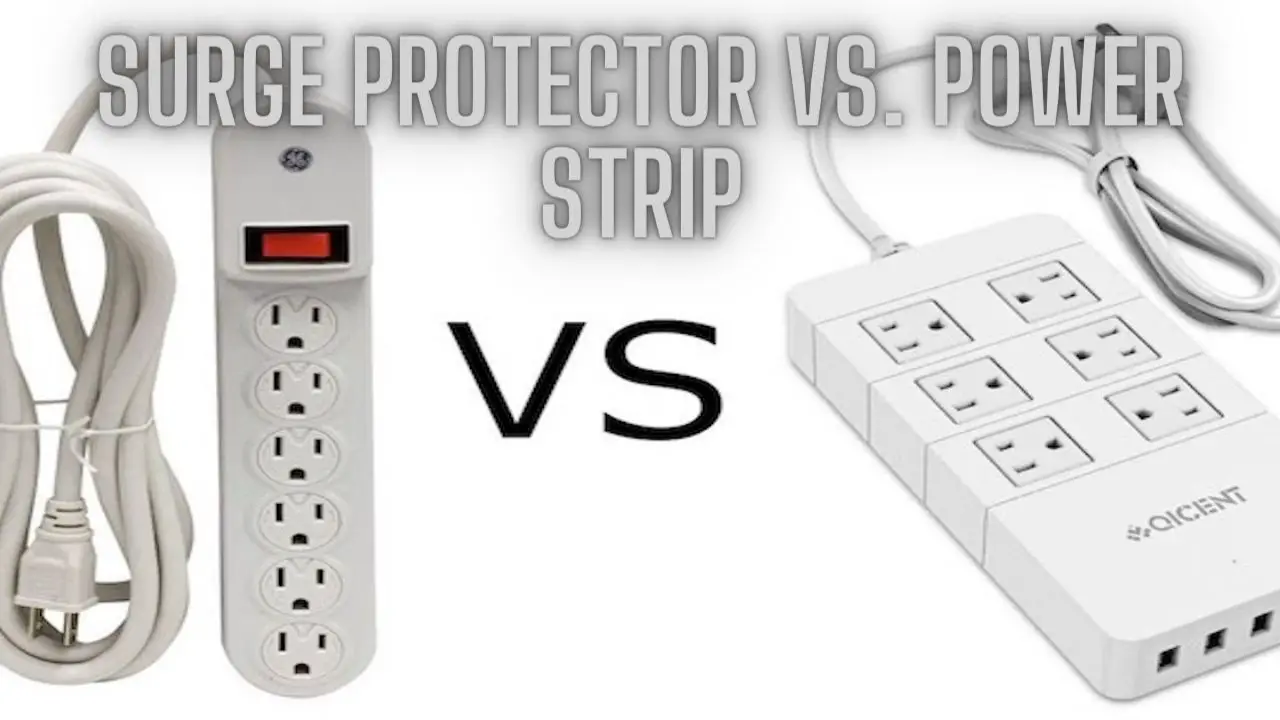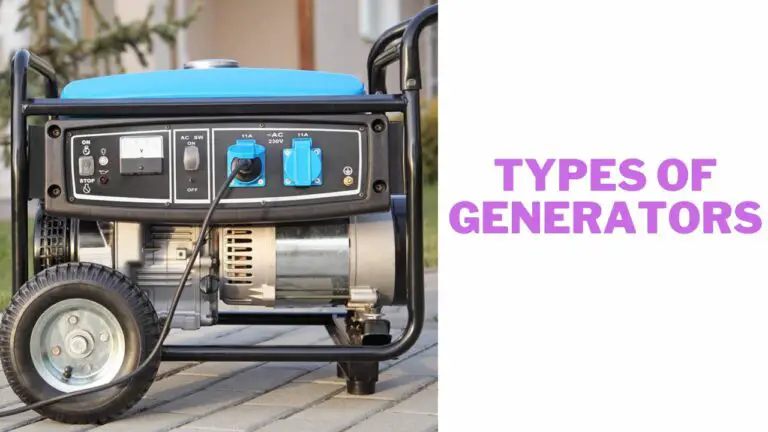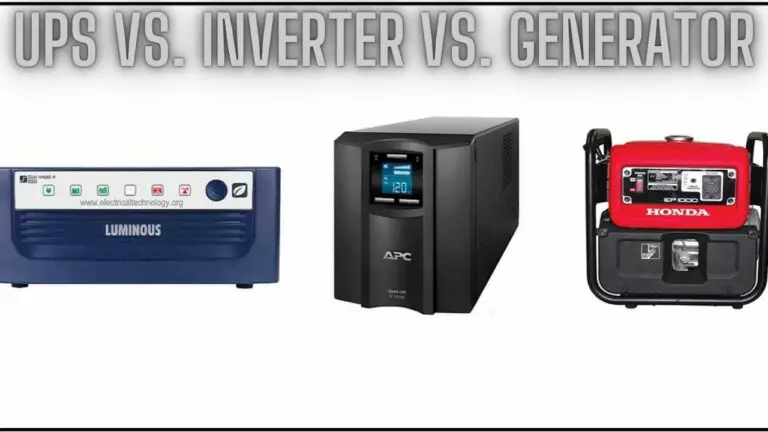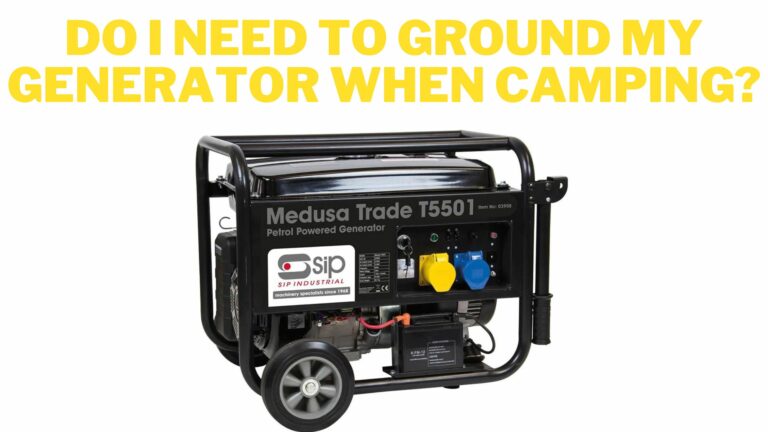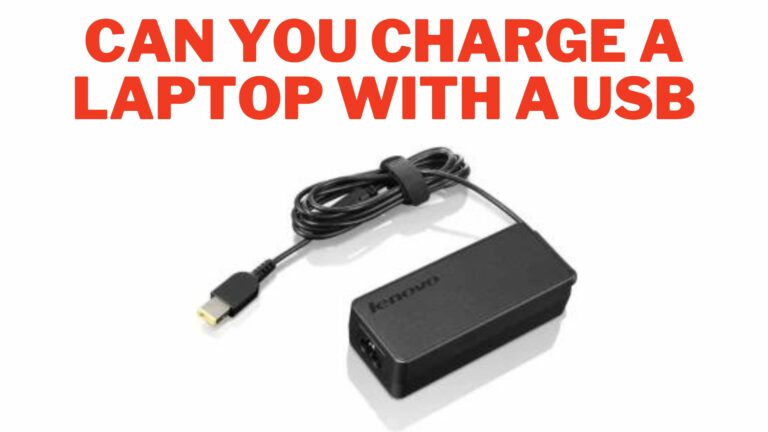Surge Protector vs. Power Strip: Navigating the Power Realm
Introduction
In today’s digital age, where electronic devices are an integral part of our daily lives, protecting them from electrical hazards is paramount. Surge protectors and power strips are two common devices used to distribute electricity to multiple devices simultaneously. While they may appear similar at first glance, they serve distinct purposes and offer different levels of protection. In this comparison, we’ll delve into the differences between surge protectors and power strips, examining their functionalities, features, and suitability for various applications. Understanding these differences will help you make an informed decision when choosing the right device to safeguard your valuable electronics.
Basic Functionality
The basic functionality of surge protectors and power strips revolves around distributing electrical power to multiple devices from a single power source. Here’s a breakdown of their basic functions:
- Surge Protector:
- A surge protector, also known as a surge suppressor, is designed primarily to protect electronic devices from voltage spikes or surges in the electrical supply.
- It contains components such as metal oxide varistors (MOVs) or gas discharge tubes that divert excess voltage away from connected devices, preventing them from being damaged by power surges.
- In addition to surge protection, surge protectors often feature multiple outlets, allowing users to plug in multiple devices simultaneously.
- Surge protectors typically come with a joule rating, which indicates the amount of energy they can absorb before they need to be replaced or lose effectiveness.
- Some surge protectors also include other features such as EMI/RFI filtering to reduce electromagnetic interference and noise.
- Power Strip:
- A power strip, on the other hand, serves as a multi-outlet extension cord, allowing users to connect multiple devices to a single power source.
- Power strips do not provide any form of voltage surge protection. They simply act as a hub to extend the reach of electrical outlets, allowing users to power several devices from a single wall outlet.
- Power strips come in various configurations, offering different numbers of outlets and sometimes additional features such as surge protection, on/off switches, or USB charging ports.
- While power strips are convenient for powering multiple devices simultaneously, they do not offer the same level of protection against voltage spikes as surge protectors.
In summary, while both surge protectors and power strips provide multiple outlets for connecting devices, surge protectors offer the added benefit of protecting connected devices from voltage spikes, making them essential for safeguarding sensitive electronics against electrical damage.
Surge Protection
Surge protection is a critical aspect that distinguishes surge protectors from power strips. Here’s a detailed look at surge protection:
- Surge Protector:
- Surge protectors are specifically designed to safeguard electronic devices from voltage spikes or surges in the electrical supply.
- Voltage spikes can occur due to various reasons such as lightning strikes, power outages, or fluctuations in the electrical grid. These spikes can cause irreparable damage to sensitive electronic equipment.
- Surge protectors contain components such as metal oxide varistors (MOVs), gas discharge tubes, or silicon avalanche diodes that detect excess voltage and divert it away from connected devices.
- When a voltage spike occurs, the surge protector absorbs the excess energy, preventing it from reaching the connected devices and potentially damaging them.
- Surge protectors come with a joule rating, which indicates the amount of energy they can absorb before they need to be replaced or lose effectiveness.
- Surge protectors are essential for protecting valuable electronics such as computers, TVs, gaming consoles, and other sensitive equipment from electrical damage.
- Power Strip:
- Power strips do not offer surge protection. They simply serve as multi-outlet extension cords, allowing users to connect multiple devices to a single power source.
- While power strips are convenient for powering multiple devices simultaneously, they do not provide any protection against voltage spikes or surges.
- Connecting sensitive electronics directly to a power strip without surge protection leaves them vulnerable to damage in the event of a voltage spike.
In summary, surge protectors provide essential protection against voltage spikes, ensuring the safety and longevity of sensitive electronic devices. Power strips, on the other hand, do not offer surge protection and are primarily used for convenience in extending the reach of electrical outlets. When safeguarding valuable electronics, it’s crucial to use surge protectors to mitigate the risks posed by voltage spikes.
Voltage Spike Protection
Voltage spike protection is a critical aspect of surge protection, particularly in surge protectors. Here’s a closer look at voltage spike protection:
- Detection and Response:
- Surge protectors are designed to detect sudden increases in voltage, known as voltage spikes or surges.
- When a voltage spike is detected, the surge protector responds by diverting the excess voltage away from connected devices, preventing damage.
- Components:
- Surge protectors use various components to provide voltage spike protection, such as metal oxide varistors (MOVs), gas discharge tubes, or silicon avalanche diodes.
- These components are designed to absorb and dissipate the excess voltage, redirecting it to the ground and protecting connected devices.
- Clamping Voltage:
- Clamping voltage, also known as let-through voltage, is the maximum voltage level at which the surge protector will start to divert excess voltage.
- Surge protectors are rated based on their clamping voltage, with lower clamping voltages providing better protection against voltage spikes.
- Joule Rating:
- The joule rating of a surge protector indicates the amount of energy it can absorb before it needs to be replaced or loses effectiveness.
- Higher joule ratings indicate greater capacity for absorbing energy from voltage spikes, providing better protection for connected devices.
- Response Time:
- Surge protectors also have a response time, which is the time it takes for the surge protector to react and divert excess voltage once a voltage spike is detected.
- Faster response times are desirable as they allow the surge protector to quickly protect connected devices before they can be damaged by the voltage spike.
In summary, voltage spike protection is a crucial aspect of surge protection provided by surge protectors. By quickly detecting and responding to voltage spikes, surge protectors help safeguard electronic devices from damage caused by sudden increases in voltage, ensuring their longevity and reliable performance.
Capacity and Outlets
- Surge Protector:
- Surge protectors come in various capacities, offering a range of outlets to accommodate different setups.
- They are available with multiple outlets, typically ranging from 4 to 12 or more, allowing users to connect multiple devices simultaneously.
- Surge protectors may also feature special outlets such as spaced outlets for accommodating larger power adapters or transformer plugs without blocking adjacent outlets.
- Power Strip:
- Power strips also come in various configurations with different capacities and outlet numbers.
- They typically offer multiple outlets, similar to surge protectors, allowing users to plug in multiple devices.
- Power strips may have fewer outlets compared to surge protectors, ranging from 2 to 8 or more, depending on the model and design.
- Capacity Considerations:
- When choosing between a surge protector and a power strip, it’s essential to consider the capacity and outlet requirements of your setup.
- Surge protectors are ideal for environments where protection against voltage spikes is a priority, and multiple devices need to be connected.
- Power strips are suitable for basic power distribution needs without the need for surge protection, such as powering multiple electronic devices in a home or office.
- Outlets and Usability:
- Both surge protectors and power strips may come with additional features such as USB charging ports, indicator lights, and on/off switches for added convenience.
- Consider the spacing between outlets, as well as the orientation of the outlets, to ensure compatibility with various types of plugs and adapters.
In summary, both surge protectors and power strips offer multiple outlets for connecting devices, but surge protectors provide the added benefit of voltage spike protection. The choice between them depends on the specific requirements of your setup, including the need for surge protection and the number of devices to be connected.
Safety Features
Both surge protectors and power strips may incorporate safety features to mitigate potential risks associated with electrical use. Here’s a comparison of safety features typically found in surge protectors and power strips:
- Surge Protector:
- Overload Protection: Surge protectors often include overload protection mechanisms to prevent excessive current flow, which can lead to overheating or fire hazards. These mechanisms automatically shut off power to the surge protector if the connected devices draw more current than the surge protector can handle.
- Ground Fault Circuit Interrupter (GFCI): Some surge protectors come with built-in GFCI protection, which detects ground faults or leakage currents and interrupts power to prevent electric shocks or electrocution. GFCI protection is particularly important in wet or damp environments such as bathrooms or outdoor areas.
- UL Certification: Surge protectors may be certified by organizations such as Underwriters Laboratories (UL), indicating that they meet stringent safety standards and have been independently tested for safety and performance.
- Built-in Circuit Breakers: Surge protectors may feature built-in circuit breakers that trip and interrupt power in the event of a short circuit or overload, protecting connected devices from damage and reducing fire hazards.
- Child Safety Features: Some surge protectors come with childproof outlets or covers to prevent young children from inserting objects into the outlets, reducing the risk of electrical accidents.
- Power Strip:
- Overload Protection: High-quality power strips may incorporate overload protection mechanisms similar to surge protectors, automatically cutting off power if the current exceeds safe levels.
- Grounded Outlets: Power strips typically come with grounded outlets to provide additional protection against electric shocks and ensure proper grounding of connected devices.
- UL Certification: Like surge protectors, some power strips may be UL certified, indicating compliance with safety standards and regulations.
- Circuit Breakers: Certain power strips feature built-in circuit breakers that trip in the event of a short circuit or overload, protecting devices and preventing electrical hazards.
- Child Safety Features: Similar to surge protectors, power strips may include childproof outlets or covers to prevent accidental insertion of objects and reduce the risk of electrical accidents.
In summary, both surge protectors and power strips may incorporate safety features such as overload protection, GFCI protection, UL certification, circuit breakers, and child safety features to enhance user safety and protect connected devices from electrical hazards. When choosing between surge protectors and power strips, it’s essential to consider the specific safety features offered and select the option that best meets your safety needs and requirements.
Price and Affordability
When comparing surge protectors and power strips, price and affordability are important factors to consider. Here’s a closer look at how they differ in terms of cost:
- Surge Protectors:
- Surge protectors typically cost more than basic power strips due to their additional surge protection features.
- The price of surge protectors can vary depending on factors such as brand, surge protection rating, number of outlets, and additional features like USB ports or coaxial protection.
- Higher-quality surge protectors with higher joule ratings and more advanced surge protection technology may come at a higher price point but offer better protection for connected devices.
- Power Strips:
- Power strips are generally more affordable than surge protectors since they do not offer surge protection capabilities.
- The cost of power strips varies depending on factors such as the number of outlets, cord length, and additional features like on/off switches or overload protection.
- Basic power strips with fewer outlets and no additional features tend to be more budget-friendly, while power strips with more outlets or extra features may come at a slightly higher price.
- Long-Term Value:
- While surge protectors may have a higher upfront cost compared to power strips, they offer long-term value by providing protection for electronic devices against voltage spikes.
- Investing in a surge protector can help prevent costly damage to sensitive electronics such as computers, TVs, and home entertainment systems, potentially saving money in the long run.
- Affordability vs. Protection:
- When considering price and affordability, it’s essential to weigh the cost of the device against the level of protection it offers.
- While power strips may be more budget-friendly, they lack surge protection and may not adequately safeguard valuable electronic equipment from voltage spikes.
- Investing in a surge protector may be a more prudent choice in the long term, especially for protecting expensive electronics and ensuring their longevity.
In summary, while surge protectors may have a higher upfront cost compared to power strips, they offer valuable surge protection capabilities that can help safeguard electronic devices from damage. When evaluating price and affordability, it’s essential to consider the long-term value and protection provided by surge protectors versus the lower cost of basic power strips.
Use Cases and Applications
Surge protectors and power strips serve different purposes and are suitable for various use cases and applications. Here’s how they differ in terms of their typical use cases:
- Surge Protectors:
- Surge protectors are ideal for protecting sensitive electronic devices from voltage spikes or surges in the electrical supply.
- They are commonly used to safeguard computers, TVs, home theater systems, gaming consoles, networking equipment, and other electronics that are susceptible to damage from power surges.
- Surge protectors are essential in environments where electrical disturbances are common, such as homes with older wiring, areas prone to lightning strikes, or locations with unreliable power grids.
- They are also recommended for use in home offices, entertainment centers, data centers, and commercial settings where the loss or damage of electronic equipment can have significant consequences.
- Power Strips:
- Power strips are more basic devices designed to provide additional outlets for plugging in multiple devices to a single power source.
- They are suitable for use in homes, offices, workshops, and other environments where multiple devices need to be powered simultaneously.
- Power strips are commonly used to power electronics such as lamps, chargers, printers, monitors, small appliances, and other non-sensitive devices.
- They are convenient for organizing and managing cables and power cords in workstations, entertainment centers, and home theater setups.
- Power strips are also useful for temporary or portable setups, such as powering devices during events, workshops, or outdoor activities.
In summary, surge protectors are essential for protecting sensitive electronic devices from voltage spikes, making them ideal for use in environments where electrical disturbances are common or where the loss of electronic equipment can have significant consequences. On the other hand, power strips are more suitable for providing additional outlets for powering multiple devices simultaneously in various everyday settings.
Buying Considerations
When choosing between surge protectors and power strips, several factors should be taken into account to ensure that you select the right device for your specific needs and requirements. Here are some important buying considerations to keep in mind:
- Surge Protection Needs:
- Determine whether surge protection is necessary for the electronic devices you intend to connect. If you’re connecting sensitive electronics such as computers, TVs, gaming consoles, or home entertainment systems, investing in a surge protector is advisable to protect them from voltage spikes.
- Joule Rating:
- Check the joule rating of surge protectors to ensure they provide adequate protection against voltage spikes. Higher joule ratings indicate greater capacity for absorbing energy from surges.
- Number of Outlets:
- Consider the number of outlets you require based on the number of devices you need to connect. Choose a surge protector or power strip with enough outlets to accommodate all your devices.
- Additional Features:
- Evaluate any additional features offered by surge protectors or power strips, such as USB charging ports, coaxial protection, Ethernet protection, or cord length. Choose devices with features that best suit your needs.
- Quality and Brand Reputation:
- Research the quality and reliability of surge protectors or power strips from reputable brands known for manufacturing durable and high-quality electrical products. Read customer reviews and ratings to gauge user satisfaction and reliability.
- Warranty:
- Check the warranty offered by surge protectors or power strips to ensure protection against defects or malfunctions. Look for devices with longer warranty periods for added peace of mind.
- Safety Certifications:
- Ensure that surge protectors or power strips comply with safety standards and certifications to guarantee safe operation and protection against electrical hazards.
- Budget:
- Consider your budget constraints when choosing between surge protectors and power strips. While surge protectors may have a higher upfront cost, they offer valuable surge protection benefits that can help safeguard expensive electronic equipment.
- Future Expansion:
- Anticipate future needs and consider whether additional outlets or features may be required for future expansion of your electrical setup. Choose surge protectors or power strips with room for growth to accommodate future devices.
By carefully considering these buying considerations, you can make an informed decision and choose the right surge protector or power strip to meet your specific needs, protect your valuable electronics, and ensure safe and reliable operation.
Surge Protector vs. Power Strip FAQs
- What’s the difference between a surge protector and a power strip?
- A surge protector is designed to protect electronic devices from voltage spikes or surges in the electrical supply, while a power strip simply serves as a multi-outlet extension cord without providing surge protection.
- Do power strips offer surge protection?
- No, power strips do not offer surge protection. They only act as a hub to extend the reach of electrical outlets and do not contain components to protect connected devices from voltage spikes.
- When should I use a surge protector instead of a power strip?
- Surge protectors should be used when connecting sensitive electronic devices such as computers, TVs, gaming consoles, or home entertainment systems to protect them from potential damage caused by voltage spikes.
- Can I plug a surge protector into another surge protector?
- It is generally not recommended to plug a surge protector into another surge protector, as it may reduce the effectiveness of surge protection and overload the circuit. Instead, plug high-power devices directly into the surge protector and avoid daisy-chaining surge protectors.
- Are surge protectors required for all electronic devices?
- Surge protectors are not required for all electronic devices but are recommended for protecting sensitive and expensive electronics from potential damage caused by voltage spikes.
- How long do surge protectors last?
- The lifespan of surge protectors can vary depending on factors such as the quality of the surge protector, the frequency of voltage spikes, and the level of protection provided. It is generally recommended to replace surge protectors every few years or after they have absorbed a significant amount of energy from voltage spikes.
- Do surge protectors provide warranty coverage for connected devices?
- Surge protectors typically offer warranty coverage for the surge protector itself but may not provide warranty coverage for connected devices. It’s essential to check the warranty terms and conditions provided by the surge protector manufacturer for details.
- Can power strips be used outdoors?
- Some power strips are designed for outdoor use and may be suitable for use in outdoor settings such as gardens, patios, or workshops. However, it’s essential to choose power strips specifically rated for outdoor use and ensure they are properly protected from the elements.
These FAQs provide a basic overview of the differences between surge protectors and power strips and address common questions related to their use and functionality. If you have specific questions or concerns about surge protection or power distribution, it’s advisable to consult with a qualified electrician or knowledgeable retailer for personalized advice.
Conclusion
In the realm of electronic devices and power management, the choice between surge protectors and power strips holds significant implications for the safety and longevity of your valuable equipment. While power strips offer convenience and additional outlets, surge protectors go the extra mile by providing a crucial defense against power surges. Understanding the differences between these devices and choosing the right one based on your needs ensures a secure and efficient power distribution system. Whether you’re powering your home entertainment system or safeguarding critical industrial machinery, the right choice between surge protectors and power strips can make all the difference in maintaining a reliable and secure electrical setup.

